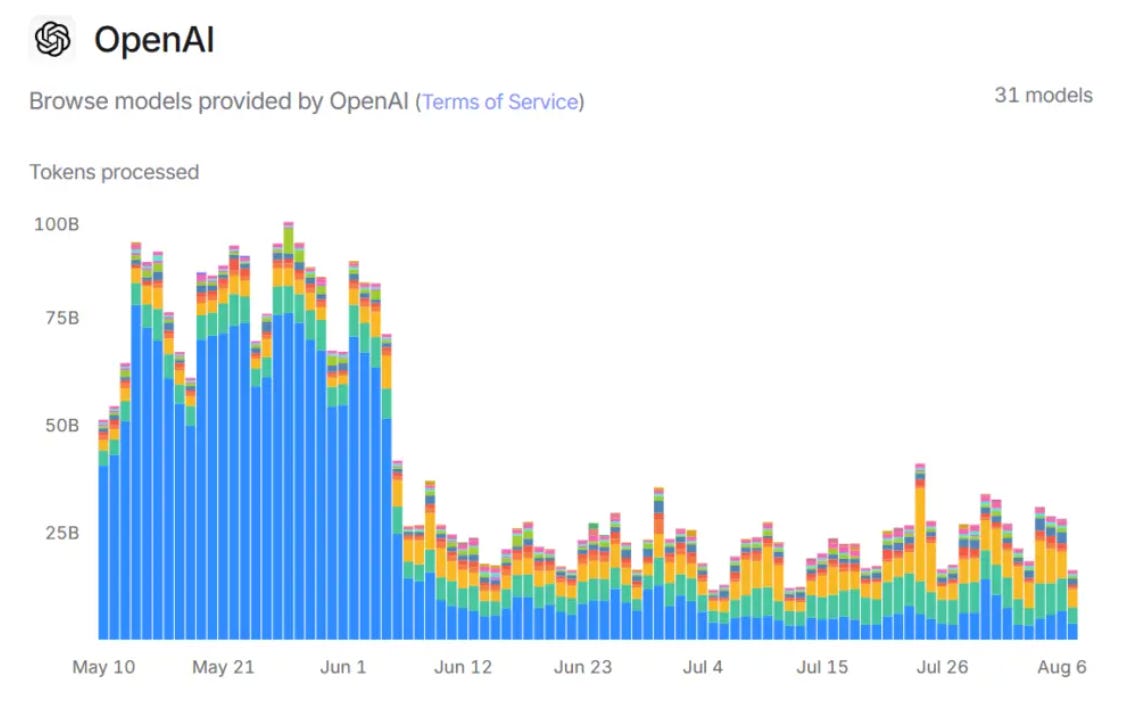Are Students the Main AI Users?
Why did AI usage drop so much during the summer months?
Chuckling, my 6th grader told me a story recently about one of his friends. Apparently, the kid’s parents assign them extra reading and then ask the child to write an essay about the book they just read.
That sounds like good parenting, right? But do you know what the kid does? He doesn’t read the book. Instead, he just uses ChatGPT to summarize the book for him, completely foiling the dad’s goals of having his kid spend more time reading.
I lead off with that story because I’ve been kind of neutral on AI’s potential effects on education. I have found some helpful uses of AI in my own work, and I was at least somewhat optimistic for the ways it might be incorporated into schools.
But one graph has changed my understanding of how AI is being used by students. The chart below, from Futurism, has been going around the interwebs. It doesn’t show all AI or even all ChatGPT users, but it shows a large sample of them. And the trends are pretty clear. In May of this year, ChatGPT usage had some notable dips on weekends. Okay, you might think that people were using it during the work week but easing back on Saturdays and Sundays.
But no, that’s probably not it, because the usage numbers plummeted at the end of June. The most likely explanation for this dramatic seasonal pattern is that the plurality of ChatGPT queries were from students using it during the school year, and that their usage fell dramatically when they were out of school.

Sherwood News reports that ChatGPT usage is apparently starting to pick back up again as students head back to school this fall. OpenAI has previously admitted that students are the most common users of their product.
This is…bad. If you care about education and whether students are actually learning things in school, this is an ominous trend. Humans will often take shortcuts when they can, but there are no shortcuts to learning. Reading and writing are two of humanity’s most important tools for acquiring new information, and AI tools are now undermining them. They’re allowing kids to pretend that they’re gaining knowledge and learning stuff without actually putting in the time.
On a related note, I found this column by Dan Lerman a wonderful reminder on the value of actually knowing facts and information.



There is an old principle in psychology called the law of least effort. Some now think of it as the law of least effort vs the law of least time since those variables are confounded. The idea is that if there are two ways to obtain the same reinforcer the person will take the way that saves time or effort or both. I used that principle to explain why tantrums reduce in frequency as a child learns to talk. Perhaps it applies to AI usage.